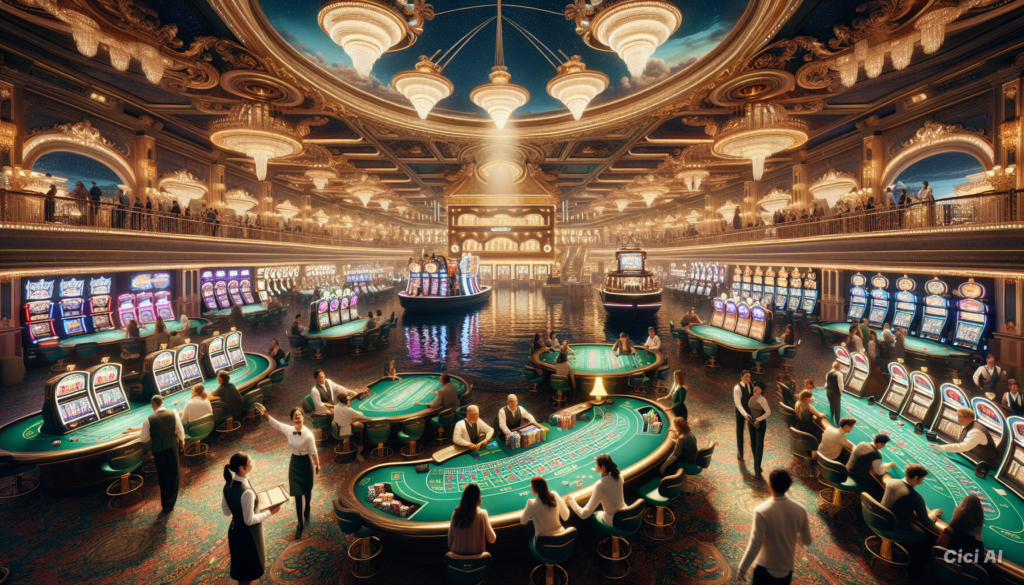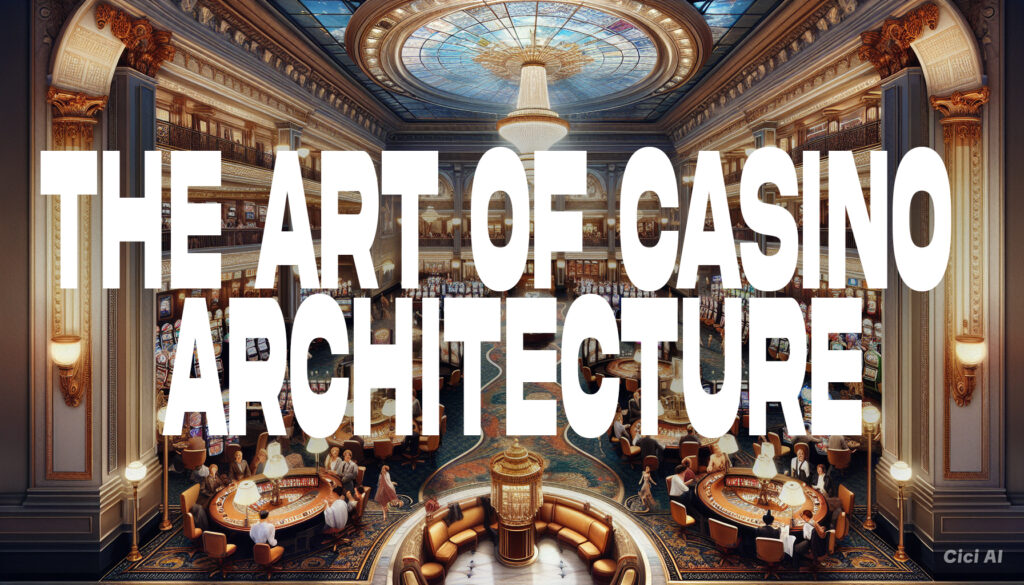Table of Contents
Casino architecture is a unique blend of artistry, psychology, and engineering. It aims to create an environment that maximizes excitement and keeps patrons engaged. This blend of form and function is not just about aesthetics; it’s about creating a seamless experience that entices and entertains visitors. Let’s delve into the art of casino architecture and explore how these spaces are designed for maximum excitement.

Casino architecture: The Psychology of Design
The primary goal of casino architecture is to keep guests within the premises for as long as possible. This involves a deep understanding of human psychology. Designers use a variety of techniques to achieve this, including:
- Labyrinthine Layouts: Casinos often use maze-like layouts to keep patrons inside. The absence of clear paths and numerous turns make it easy to lose track of time and location, encouraging further exploration and play.
- Lighting and Ambiance: The lighting in casinos is carefully controlled to create a sense of timelessness. Soft, indirect lighting eliminates harsh shadows and creates a comfortable atmosphere. The ambiance is further enhanced with thematic decor that can range from opulent luxury to whimsical fantasy.
- Sound and Acoustics: The sound design in casinos is meticulously planned. Background music, the sound of slot machines, and the buzz of conversation are all balanced to create a lively yet non-overwhelming environment. The continuous sound of winning chimes encourages players to stay and try their luck.
Thematic Elements
Themes play a crucial role in casino architecture. Whether it’s the grandeur of ancient Rome, the mystique of the Orient, or the glitz of Hollywood, themes transport guests to another world. These thematic elements are not just skin-deep; they influence every aspect of the design, from the color scheme to the types of games offered.
- Iconic Exteriors: The exterior design of a casino sets the stage for what’s inside. Iconic structures like the pyramids of Luxor, the Eiffel Tower of Paris Las Vegas, or the canals of The Venetian draw visitors with their promise of an extraordinary experience.
- Immersive Interiors: Inside, the theme is carried through with meticulous detail. Faux skylines, elaborate chandeliers, and intricately designed carpets all contribute to a cohesive and immersive environment. This attention to detail ensures that guests are constantly surrounded by elements that reinforce the theme.
Layout and Flow
Effective casino design requires careful consideration of layout and flow. The goal is to create a space that is both engaging and easy to navigate, despite its labyrinthine nature.
- Game Placement: High-energy games like craps and roulette are often placed in the center of the casino floor to attract attention and generate excitement. Slot machines, which are quieter but highly profitable, are placed along the perimeter and in less prominent areas.
- Amenities and Attractions: Modern casinos offer more than just gambling. Restaurants, bars, theaters, and shopping areas are strategically placed to keep visitors entertained and within the premises. These amenities are often located in areas that require guests to pass through the gaming floor, increasing the chances of them stopping to play.
Technological Integration
Incorporating technology is another crucial aspect of modern casino design. This includes everything from advanced security systems to interactive displays and mobile apps.
- Security and Surveillance: Casinos are heavily monitored environments. State-of-the-art surveillance systems ensure the safety and security of both patrons and the establishment. This technology is seamlessly integrated into the design to maintain the aesthetic appeal of the space.
- Interactive Elements: Touchscreens, digital displays, and interactive signage enhance the guest experience by providing information, promotions, and interactive games. These elements keep guests engaged and can even guide them to various attractions within the casino.
Sustainability and Innovation
As environmental awareness grows, casinos are increasingly incorporating sustainable practices into their design.
- Energy Efficiency: Modern casinos utilize energy-efficient lighting, HVAC systems, and water-saving fixtures to reduce their environmental footprint. These innovations not only benefit the environment but also result in significant cost savings.
- Green Building Materials: The use of sustainable building materials, such as recycled steel, reclaimed wood, and low-VOC paints, is becoming more common. These materials help reduce the environmental impact of construction and create healthier indoor environments for guests and staff.
Conclusion
The art of casino architecture is a dynamic and multifaceted field that combines aesthetics, psychology, and technology to create spaces that are both captivating and functional. From the initial design concept to the smallest decorative detail, every element is carefully crafted to maximize excitement and keep guests engaged. As technology and sustainability continue to evolve, casino architecture will undoubtedly adapt and innovate, ensuring that these spaces remain at the forefront of entertainment and design.

